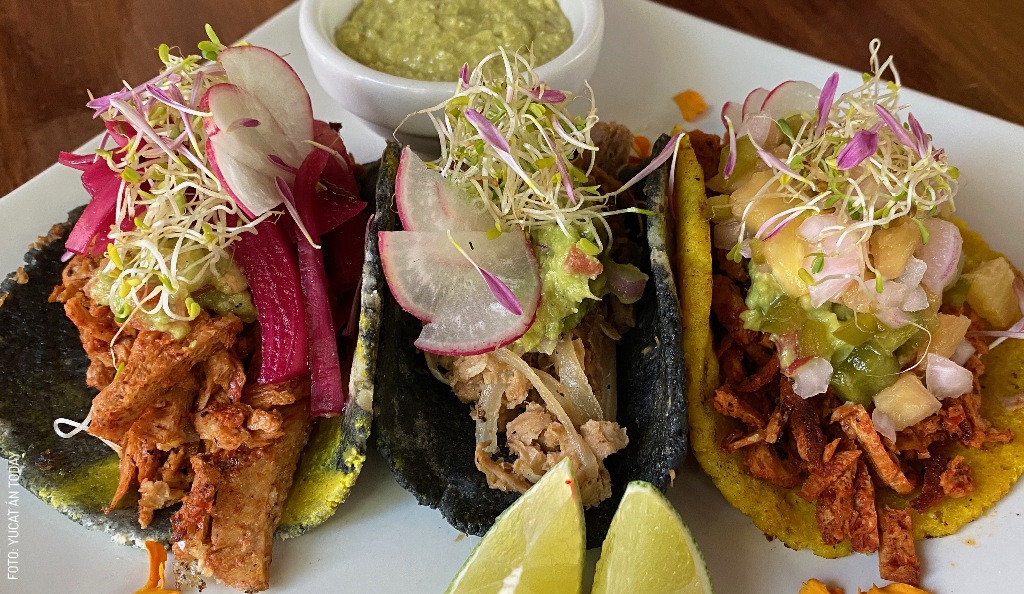- Inicio
- Gastronomia
- Gastronomía Yucateca
Gastronomía Yucateca
La gastronomía yucateca es reconocida internacionalmente por su riqueza cultural tradicional, identidad maya e influencias españolas y libanesas.
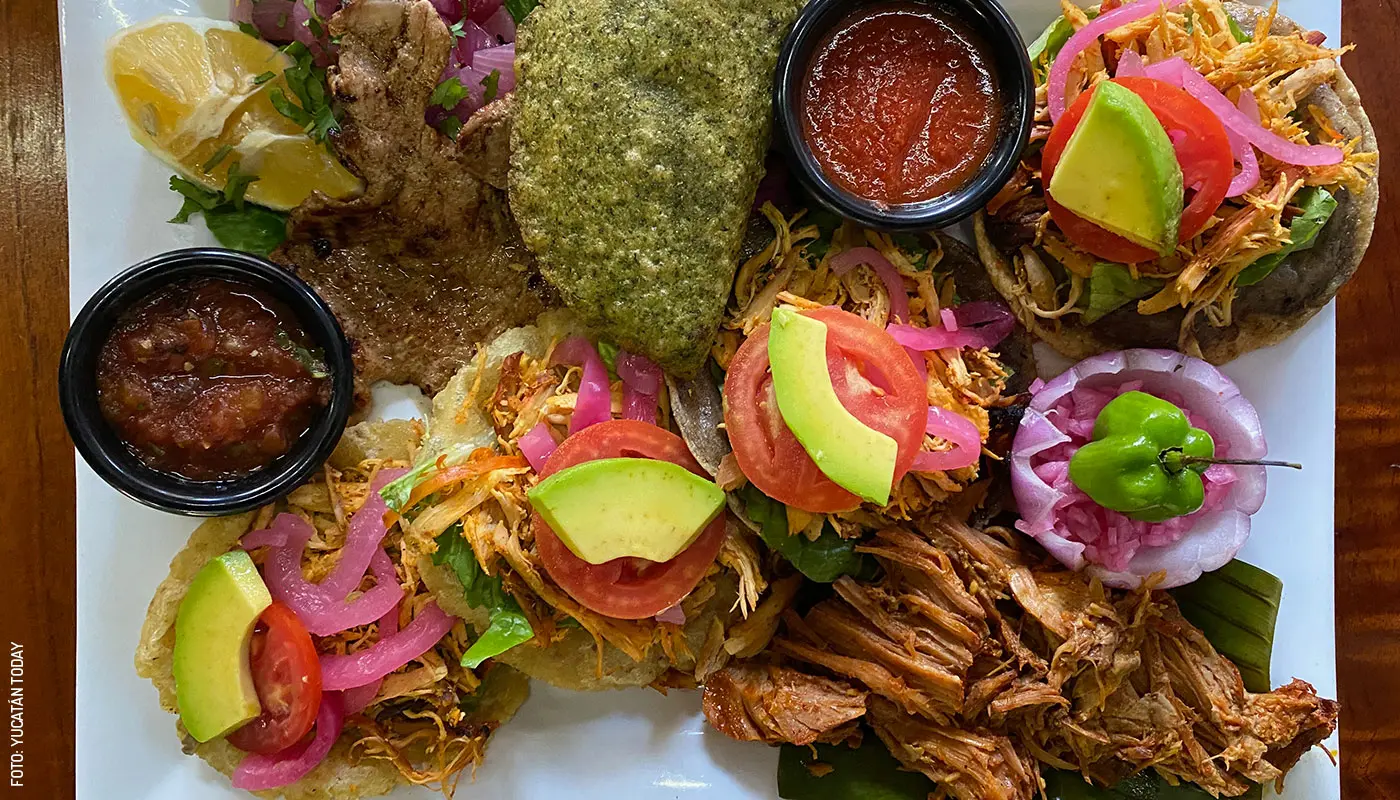
La guía más completa de la gastronomía yucateca
Yucatán es hogar de una rica tradición gastronómica que combina ingredientes que son comunes a todo México, como lo son el maíz, el tomate y el frijol, con otros que son propios de la región, como el chile habanero, la naranja agria y el famoso achiote que da color y sabor a los platillos.
La gastronomía yucateca es reconocida internacionalmente por su riqueza cultural tradicional, que no sólo mantiene la identidad maya, sino que también incorpora influencias españolas y libanesas. Te presentamos algunos de sus platillos más representativos.
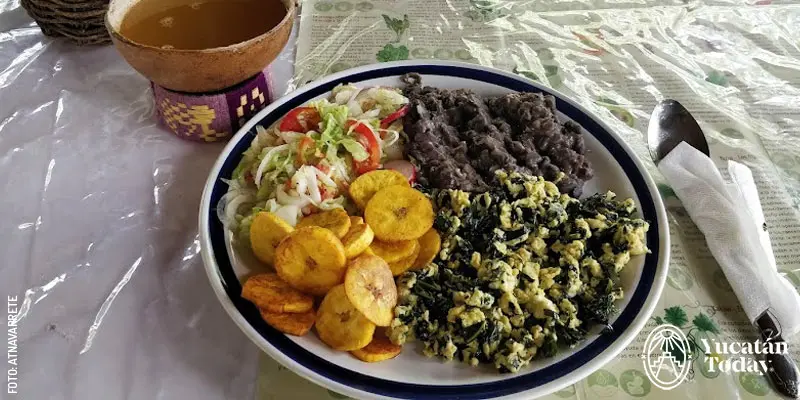
Huevos con chaya
Como su nombre lo indica, se trata de huevos revueltos con las tradicionales hojas de chaya (Cnidoscolus chayamansa) que crecen tan abundantemente en la región. El sabor de la chaya te recordará al de la espinaca, pero distinto. El huevo con chaya es un platillo tradicionalmente casero.
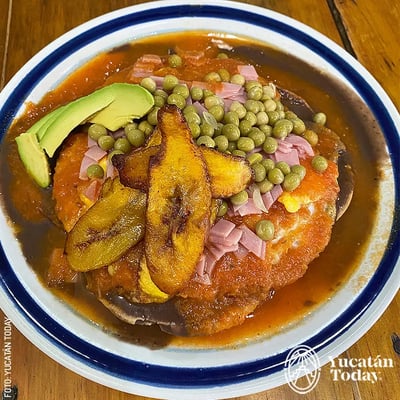
Huevos Motuleños
Este plato consiste en una tostada (tortilla frita) con frijoles refritos negros y un huevo frito o estrellado; el huevo se cubre con salsa de tomate, jamón en cubos, queso y chícharos y se adorna con plátano macho. ¡También es muy común para comer al mediodía! Y aunque los huevos motuleños son originarios del Pueblo Mágico de Motul, se dice que fueron inventados por don Jorge Siqueff, fundador del restaurante Siqueff.
Tacos y tortas de cochinita pibil o lechón al horno. (Ver más adelante).
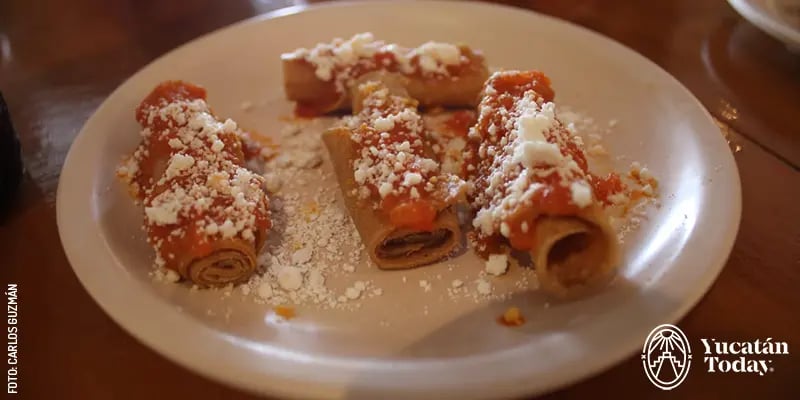
Codzitos
Crujientes taquitos de tortilla de maíz, rellenos de… absolutamente nada. Sólo son la tortilla, salsa de tomate, y queso sopero (tipo Cotija) espolvoreado, y aún así, sorprendentemente deliciosos.
Ensalada de papa en escabeche
Esta botanita deliciosamente ácida puede incluir salchichas rebanadas, pero normalmente sus ingredientes más abundantes son papa, cebolla y cilantro; ten cuidado al probarlo, pues algunos lugares le ponen chile habanero. Es buena idea preguntar cuando llegue a la mesa.
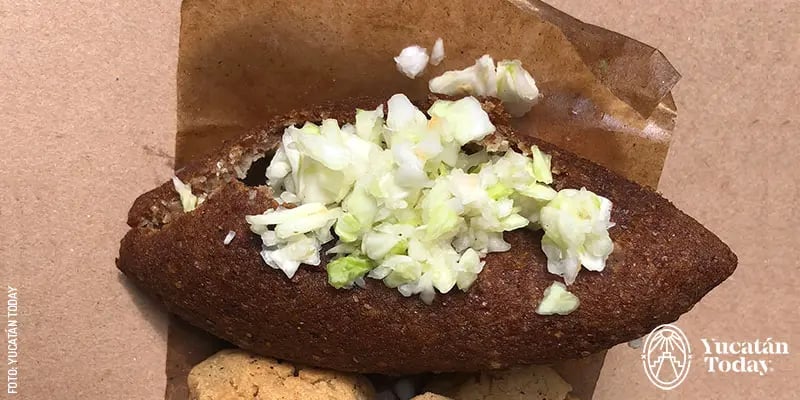
Kibis
Los kibis son una tropicalización de los kibbeh libaneses; los encontrarás en una variedad de lugares y presentaciones. En los botaneros y cantinas, normalmente se sirven como tortitas pequeñas, de unos cinco centímetros de diámetro; como comida callejera los verás transportados en contenedores que parecen peceras, con forma ovalada, como una pelota de futbol americano. Éstos están vacíos por dentro; el “kibero” los llena con cebolla y repollo en escabeche cuando te los entrega, a menos que le pidas que no lo haga. Encontrarás versiones más fieles a la versión original del Medio Oriente en los diversos restaurantes libaneses de Mérida.
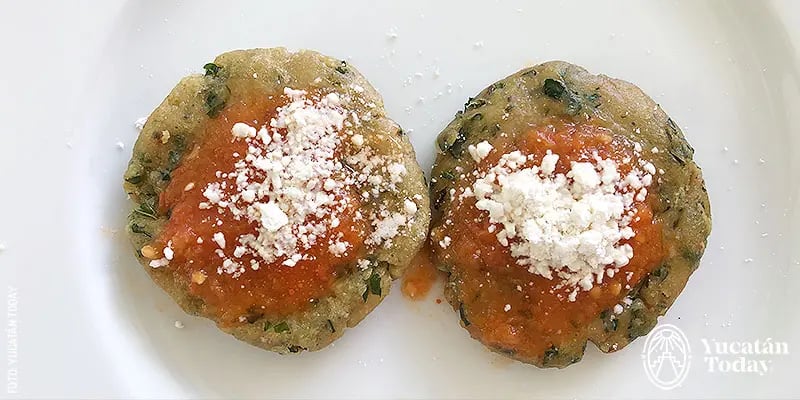
Chayitas
Las presentaciones varían, pero las chayitas normalmente son tortitas fritas, hechas de masa revuelta con chaya picada. A veces se sirven con salsa de tomate, y a veces con Xnipek (pico de gallo, hecho con tomate, cebolla, cilantro, naranja agria y, opcionalmente, chile habanero).
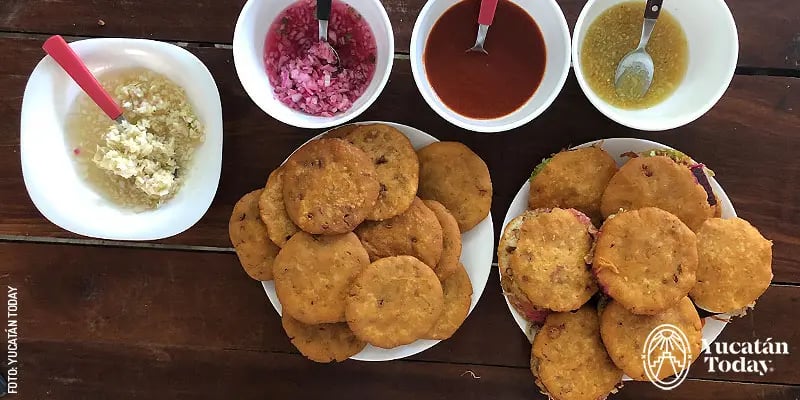
Polcanes
Aunque algunas presentaciones son similares a lo que quizá conozcas como “gorditas”, los auténticos polcanes se distinguen por su particular forma, similar a la cabeza de una serpiente (Pool K’aan, en maya). Los rellenos también pueden variar, pero el tradicional es el Tooksel, un platillo (totalmente vegetariano) hecho con frijoles blancos (Ibes) y pepita de calabaza molida.
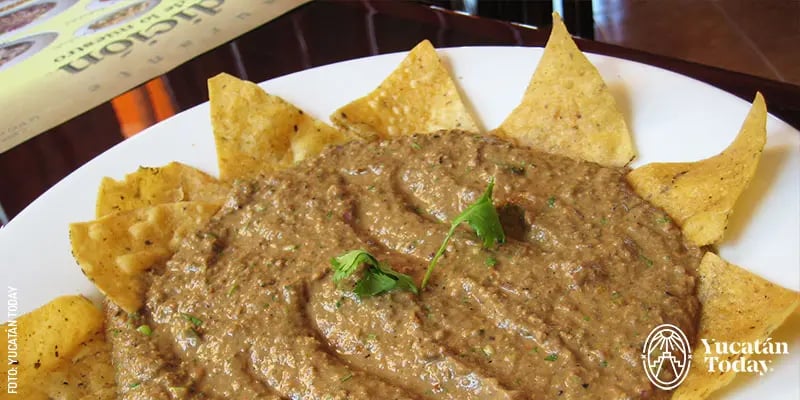
Sikil P’aak
Un dip tradicional hecho de pepita de calabaza tostada y molida, cilantro y tomate asado. Es otra botana vegetariana súper nutritiva, que normalmente se sirve con tostadas.
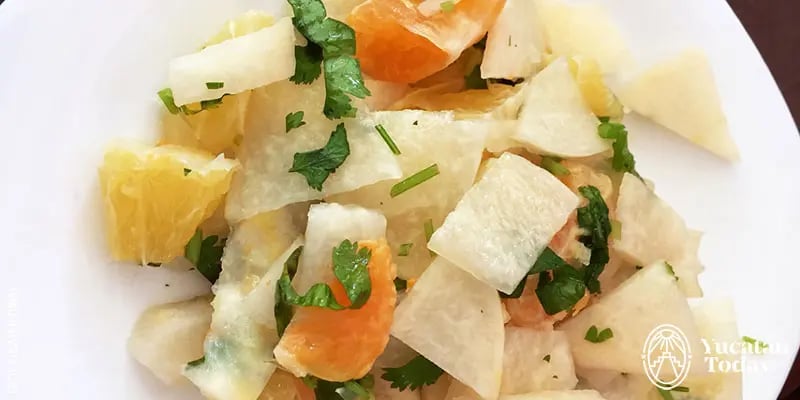
Xe’ek’
Esta fresca ensalada está hecha con jícama y cítricos, normalmente naranjas y mandarinas. Algunas personas le ponen chile molido, ya sea chile Maax o habanero, y algunas personas le agregan cilantro. Como lo pruebes, es una botana muy tradicional, especialmente en otoño, que es la temporada tanto de jícama como de cítricos. “Xe’ek’” también es la palabra que usamos en Yucatán para describir algo desordenado: “la casa estaba hecha un Xe’ek’”.
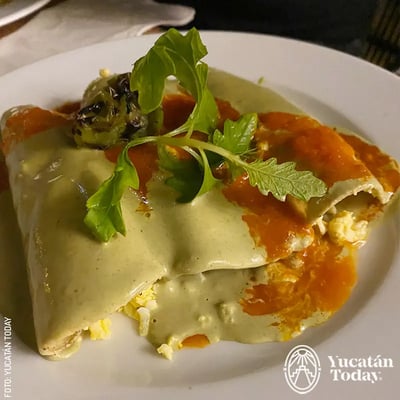
Papadzules
Tacos rellenos de huevo duro finamente picado, cubierto con salsa de pepita de calabaza molida y salsa de tomate. Ideal para vegetarianos y omnívoros por igual.
.jpg?width=800&height=400&name=Cocina-Yucateca-sopa-de-lima-by-Yucatan-Today%20(1).jpg)
Sopa de Lima
Un exquisito caldo de pollo sazonado con lima de la región. Se sirve con pollo o pavo deshebrado, tiras de tortilla frita y rodajas de lima. ¡Tienes que probarlo!
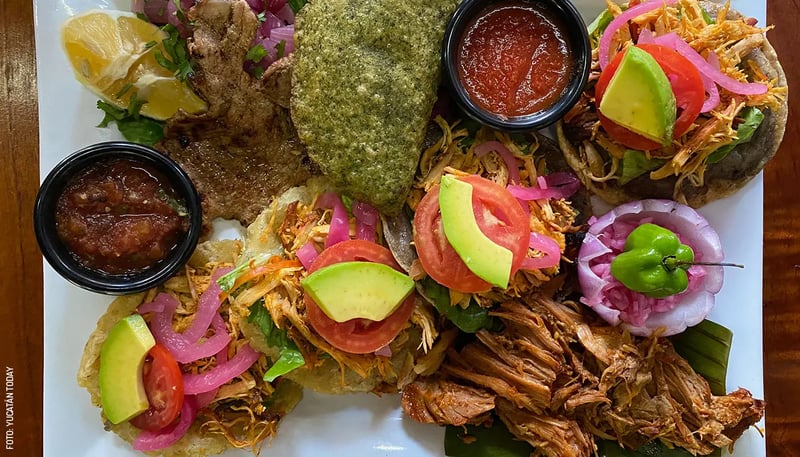
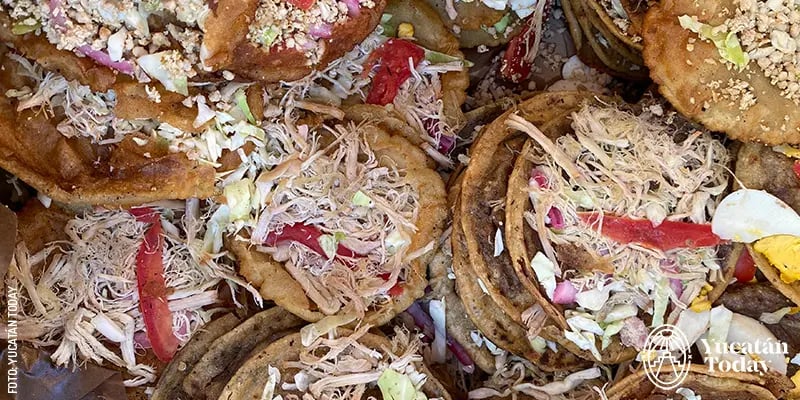
Panuchos y salbutes
Tortilla fritas hechas a mano, servidas con una variedad de vegetales que suele incluir lechuga, tomate, pepino, cebolla y/o aguacate y una proteína. Los más comunes son pollo o pavo deshebrado, y el más tradicional es el huevo duro. La diferencia entre ellos es que el salbut es suave, mientras que la crujiente tortilla del panucho está rellena de frijol. Actualmente es común encontrar variantes de carne asada, relleno negro y hasta cochinita pibil.
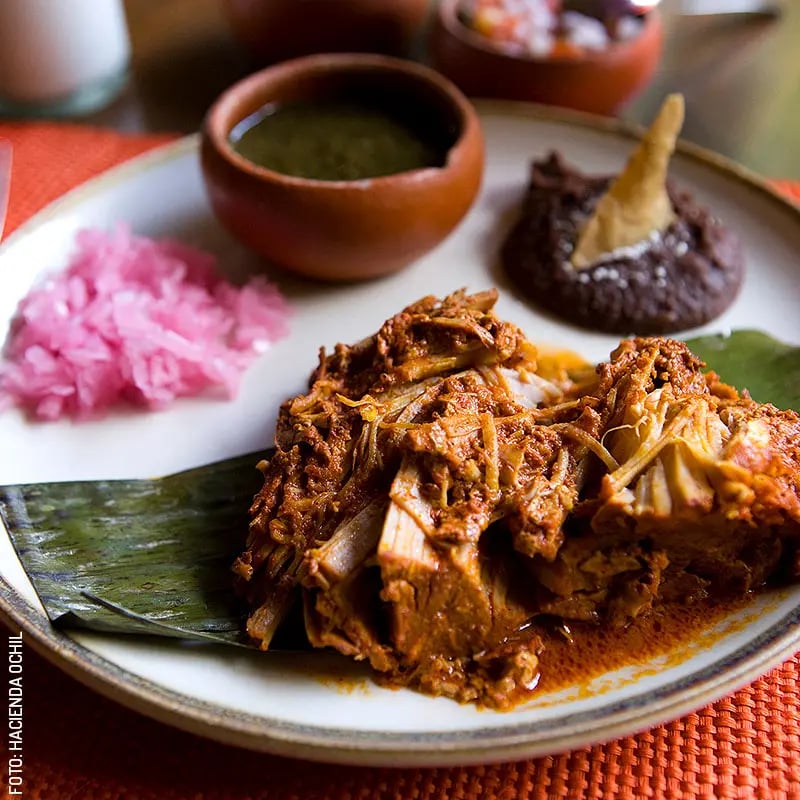
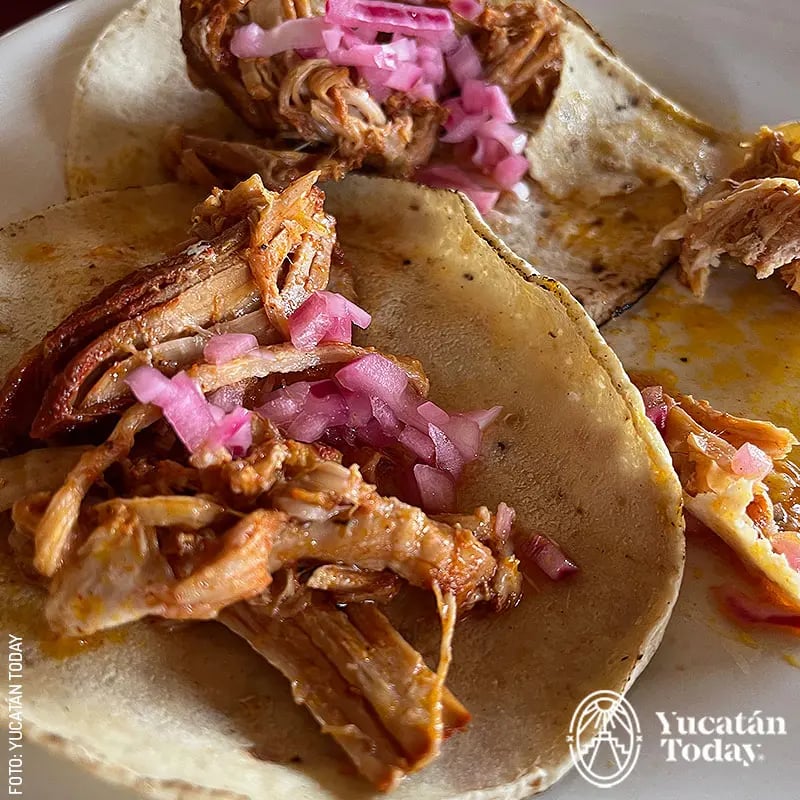
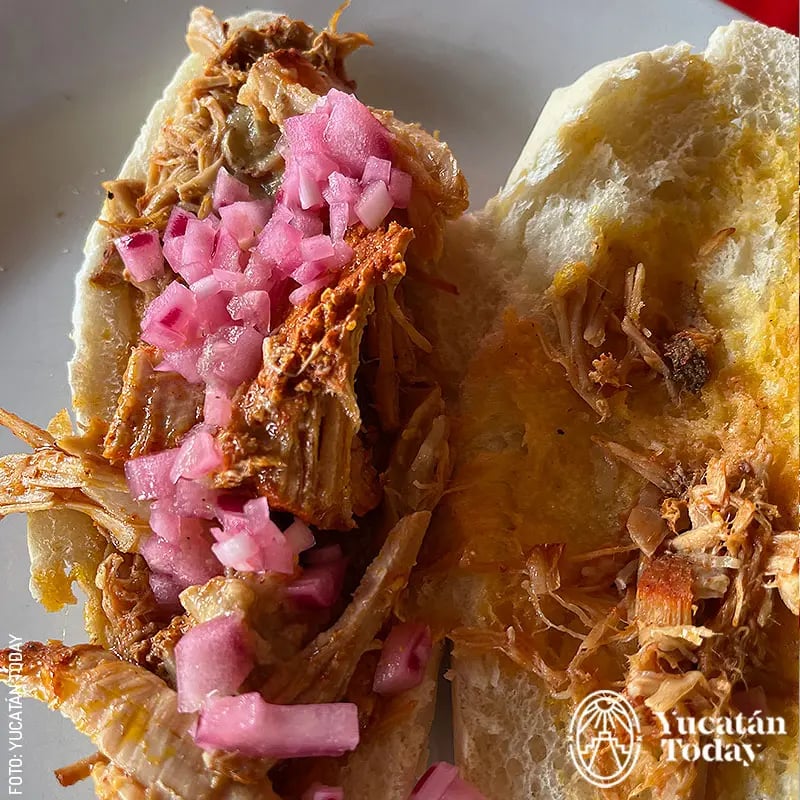
Cochinita pibil
Uno de los platos más conocidos de la cocina yucateca. Se elabora con carne de cerdo marinada en achiote y naranja agria, va envuelta en hojas de plátano y es horneada lentamente, o bien, enterrada al estilo yucateco. Se come en tacos, tortas o sola, siempre acompañada de cebolla morada.
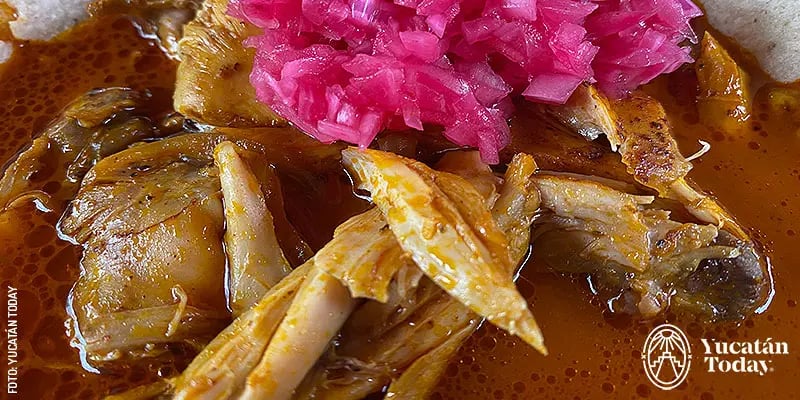
Pollo pibil
Una variante aviar de la cochinita, pero que más frecuentemente se sirve con arroz, frijol y tortillas.
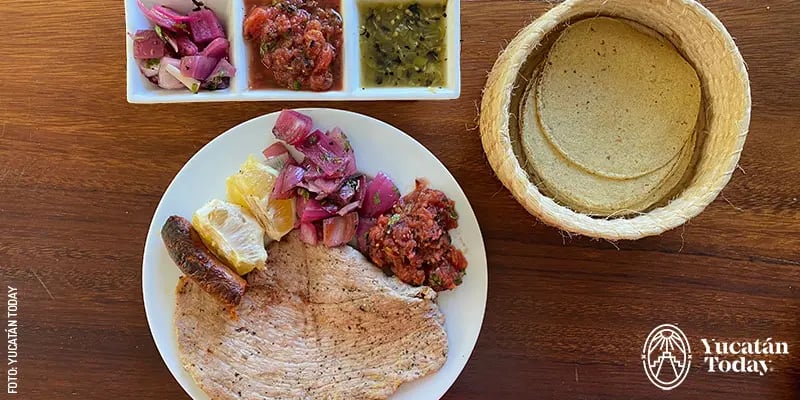
Poc Chuc
Filete de cerdo asado que se sirve acompañado de naranja agria, cebolla morada, chiltomate, aguacate y frijol colado. Es una gran opción si buscas un platillo más ligero en la gastronomía yucateca.
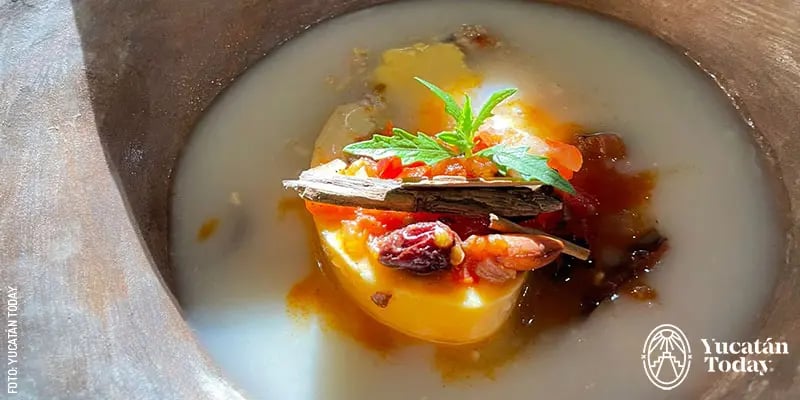
Queso relleno
Se prepara con queso de bola (holandés) relleno de carne molida de res y cerdo con almendras, pasas, chile dulce y especias de la región. Va cubierto con una salsa blanca (conocida como K’óol) a base de harina, manteca y caldo de pollo, y salsa de tomate. ¿Eres valiente para la cocina? Puedes intentar hacerlo en casa; aquí te compartimos la receta.
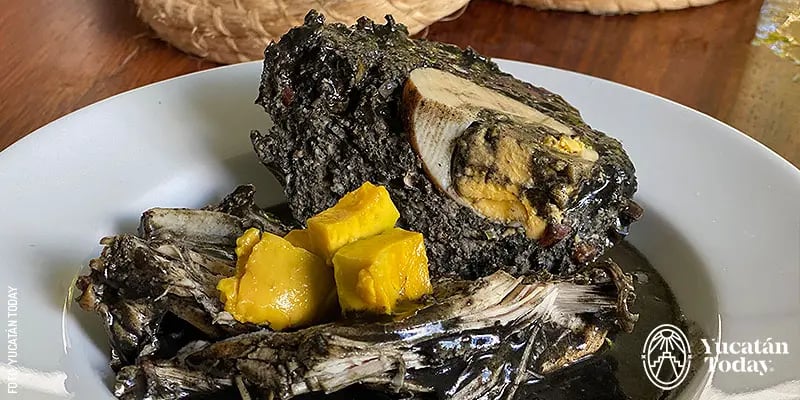
Relleno negro
Tradicional pavo sazonado con condimento hecho a base de chiles asados y especias que le dan un sabor ligeramente picante y el tradicional color negro. Se acompaña con un relleno de carne molida (llamado But) preparado con tomate y huevo picado. Se sirve el caldo con el pavo y una rebanada de but. Este platillo se sirve típicamente en las bodas y es uno de los platillos más antiguos de nuestra gastronomía.
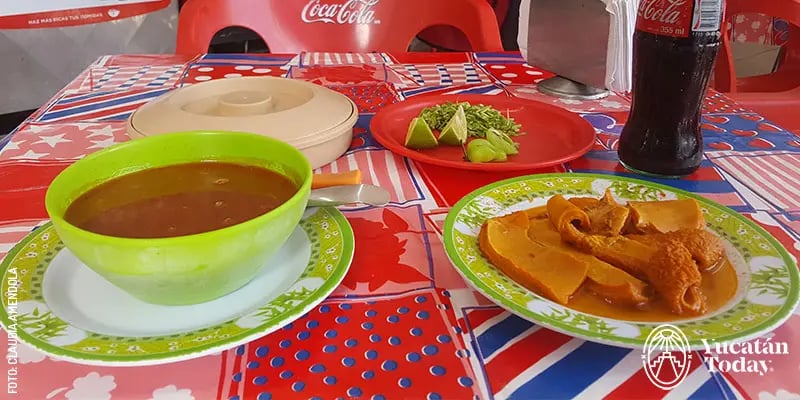
Mondongo Kabic
Es un caldo muy espeso hecho con panza y pezuñas de res. Éstas se marinan con achiote, ajo y mucha naranja agria. Se sirve con un chile habanero entero, cebolla, cebollina y cilantro. Usualmente se consigue en los mercados los fines de semana.
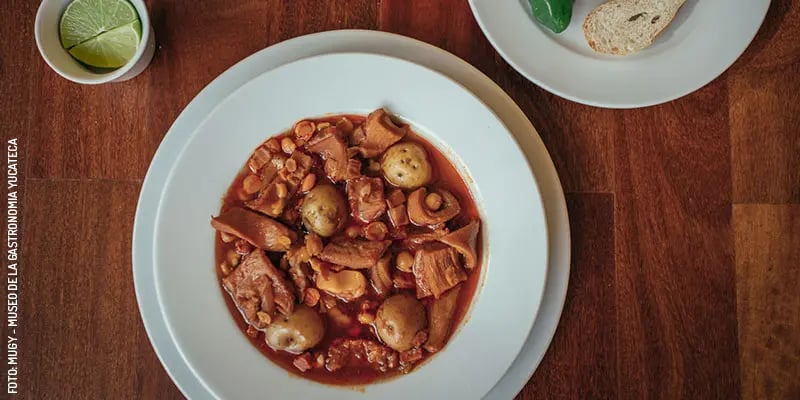
Mondongo a la Andaluza
Como el Kabic, está hecho con panza y pezuñas, pero en vez del achiote se cocina con ingredientes tradicionalmente españoles, como chorizo, longaniza, tocino, jamón, pimentón y garbanzos.
Puchero
El mejor conocido lleva tres tipos de carne: gallina, cerdo y res en caldo con varias verduras como calabaza, chayote y zanahoria. Se sirve con salpicón de rábano, cilantro y naranja agria para agregar al caldo y un plato plano para que cada quien “haga Puch” (aplaste) las verduras y la carne.
Chocolomo
A pesar de su llamativo nombre, no hay nada chocolatoso en este platillo; viene de la palabra maya Chokoj, que significa caliente. Es un caldo de lomo de res preparado con vísceras, ajos y cebolla, y que se sirve con un salpicón de rábano, cilantro, naranja agria y, opcionalmente, chile habanero.
Lechón al horno
Carne de cerdo horneada al estilo yucateco, se sirve con frijol refrito, y Xnipec, una salsa picante elaborada con chile habanero, tomate, cebolla morada, naranja agria y sal.
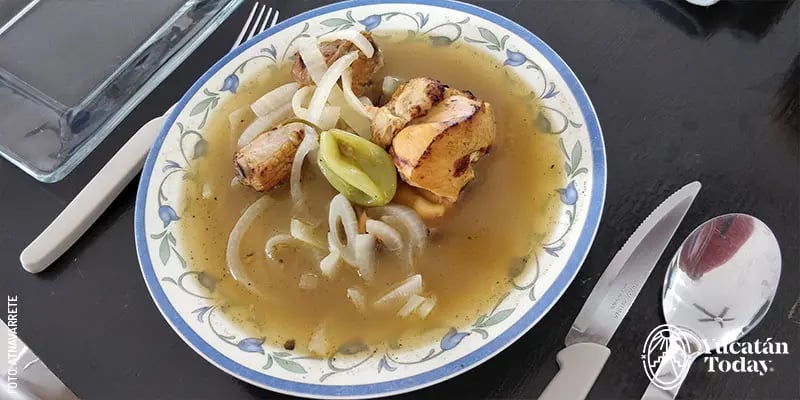
Escabeche oriental
Tradicional pavo (o pollo) asado al carbón y sazonado con cebolla, pimienta y especias de la región. Su nombre se debe a su origen en la región oriente de Yucatán. Se sirve con caldo y chile Xcatic asado, con el pollo servido en piezas o deshebrado.
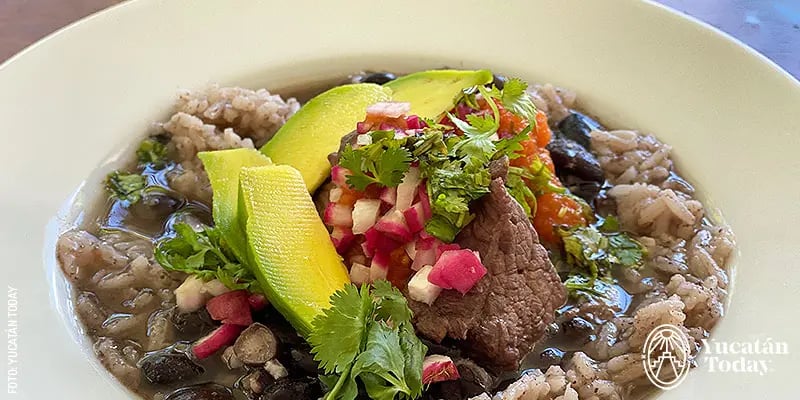
Frijol con puerco
Caldo de frijol negro con trozos de puerco cocido. Se sirve con arroz, rábano, cilantro, cebolla y salsa de tomate. Por tradición, ¡es el platillo oficial de los lunes!
Relleno blanco
Este pavo se sirve con picadillo de puerco sazonado con alcaparras, orégano, pasitas y aceitunas. Se baña con el tradicional K’óol y una deliciosa salsa de tomate.
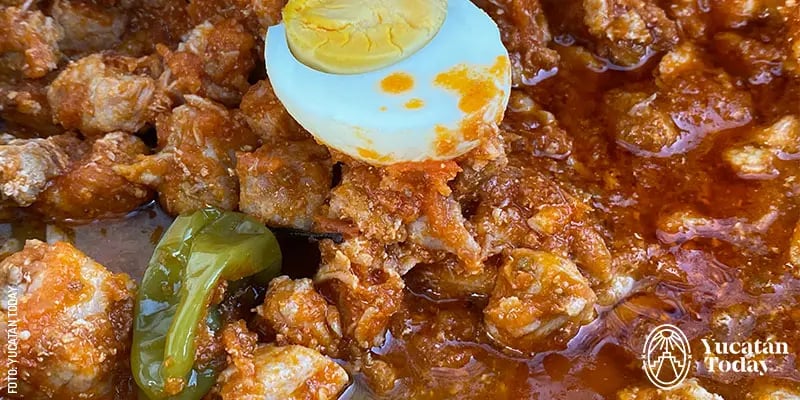
Lomitos de Valladolid
Lomo de cerdo en trozos preparado con una rica salsa de tomate ligeramente picante y aderezado con especias. Se sirve acompañado de huevo duro.
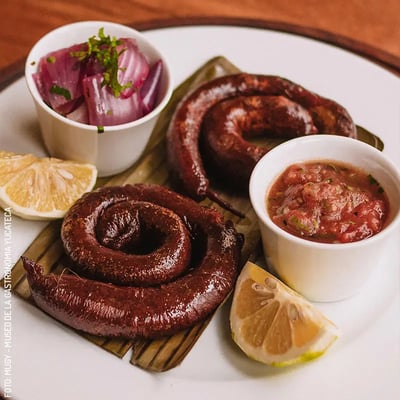
Longaniza de Valladolid
Embutido de cerdo condimentado con ajo, pimienta y vinagre. La longaniza se sirve acompañada de naranja agria, frijol refrito, chiltomate y tortillas hechas a mano. Descubre más sobre lo que Valladolid, Pueblo Mágico, tiene para ti.
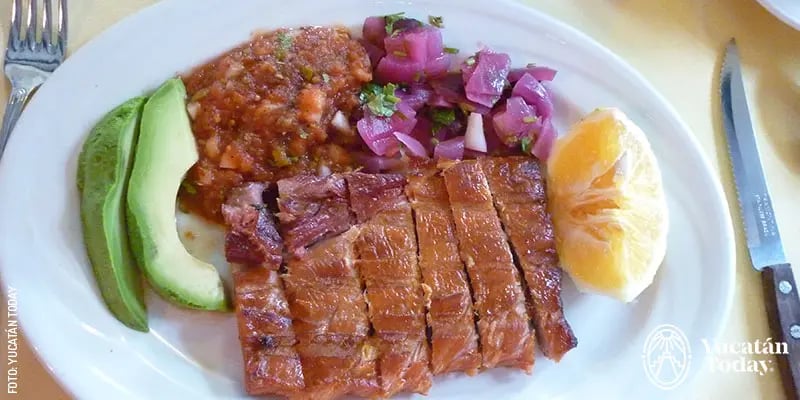
Carne Ahumada de Temozón
Carne de cerdo ahumada artesanalmente a la leña, servida con naranja agria, aguacate, cebolla morada, chiltomate y frijol. Lee más sobre Temozón, sus atracciones y sus especialidades.
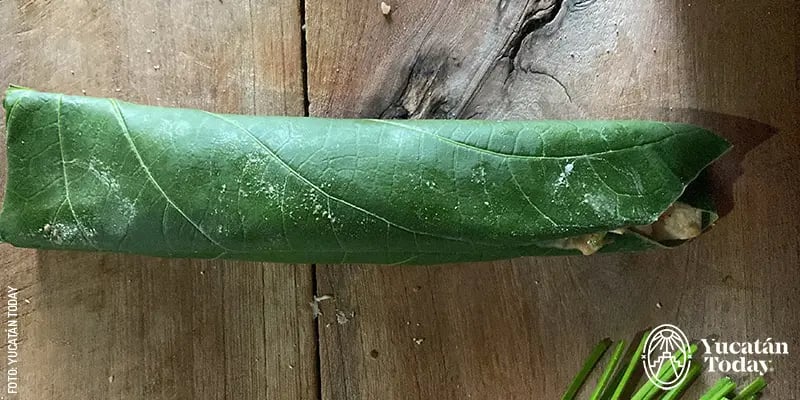
Kots’ob de Espita
Parecido a un tamal enrollado, esta delicia está hecha de iibes (frijol blanco), chile molido, pepita, masa y otros ingredientes locales envueltos en hoja santa (Piper auritum). Se puede conseguir asado, frito, o cocinado al vapor. ¿Quieres visitar el Pueblo Mágico de Espita? Haz click aquí para ver lo que te espera.
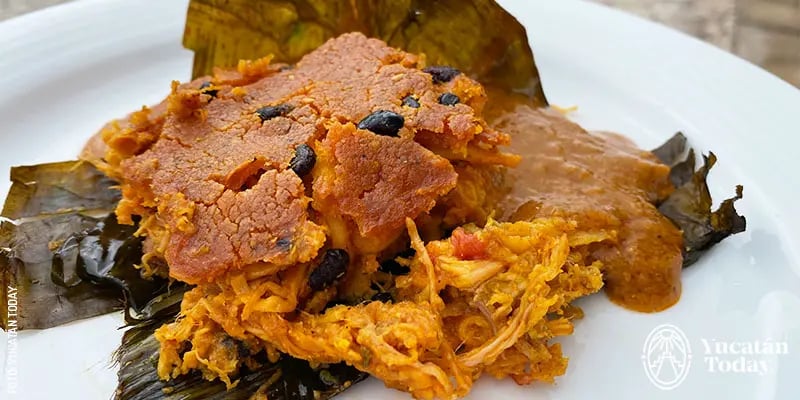
Mukbilpollo
Muchos lo describen como un tamal gigante y crujiente; se trata de una masa doradita con relleno de pavo y cerdo, que se hornea envuelta en hoja de plátano. Se consigue únicamente en octubre y noviembre, durante la observación del Janal Pixan.
Artículos relacionados
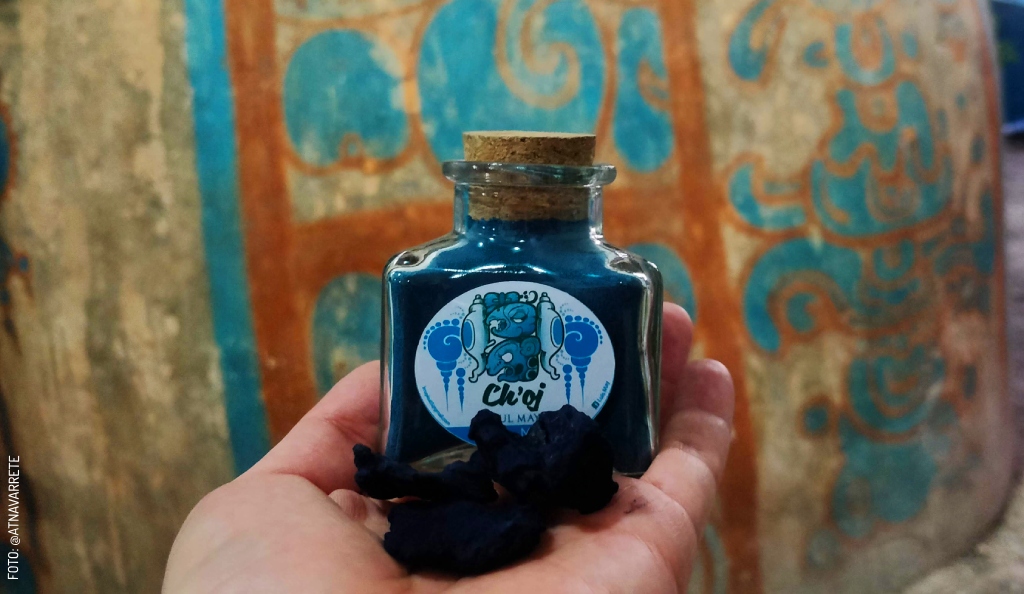
Cómo se elabora el azul maya
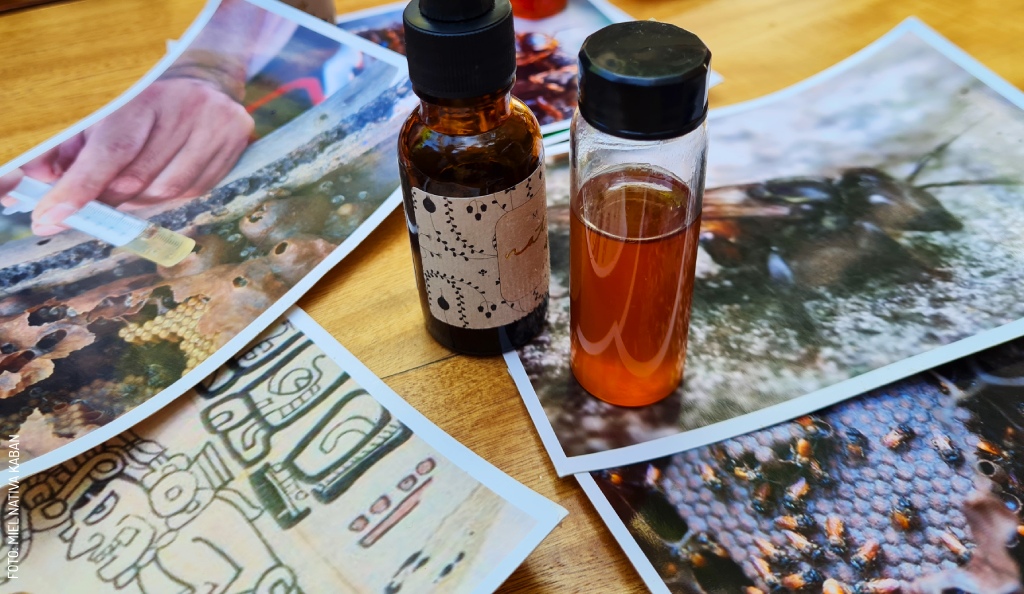
Identifica a las abejas yucatecas
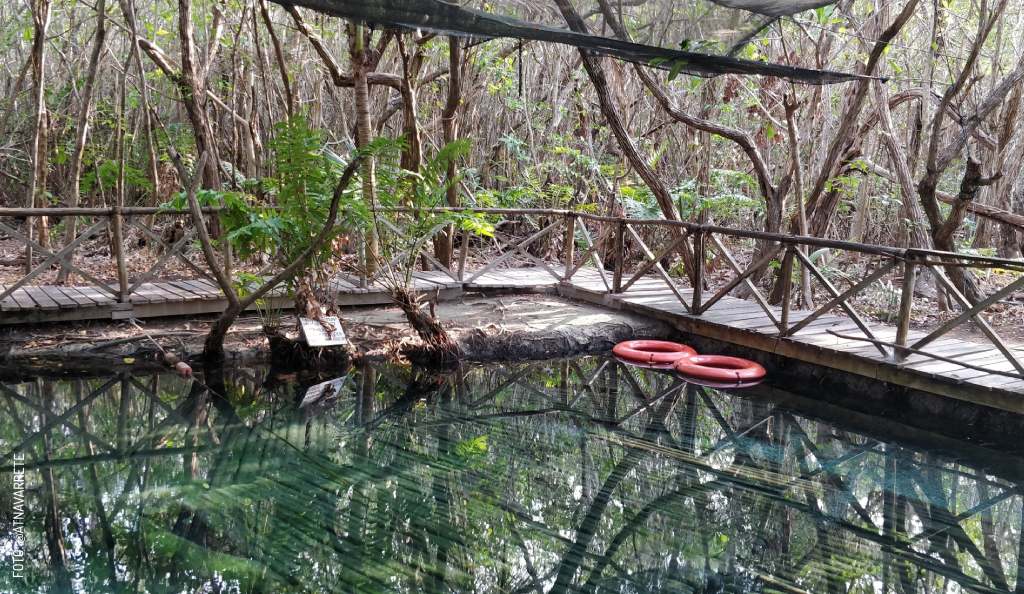
Cenotes con niños: aventura y seguridad
Artículos relacionados
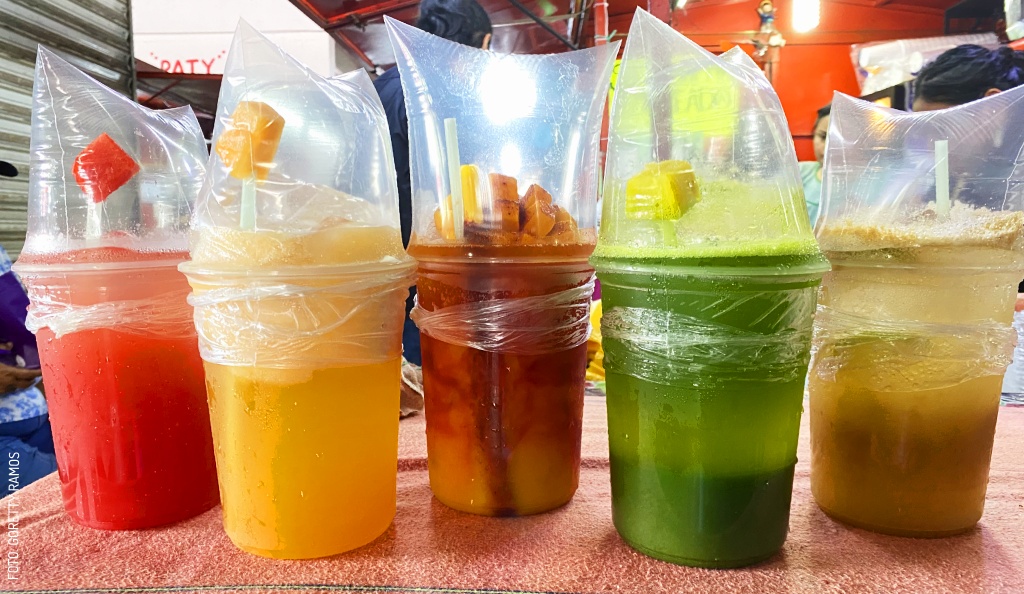
Bebidas refrescantes en los mercados de Mérida
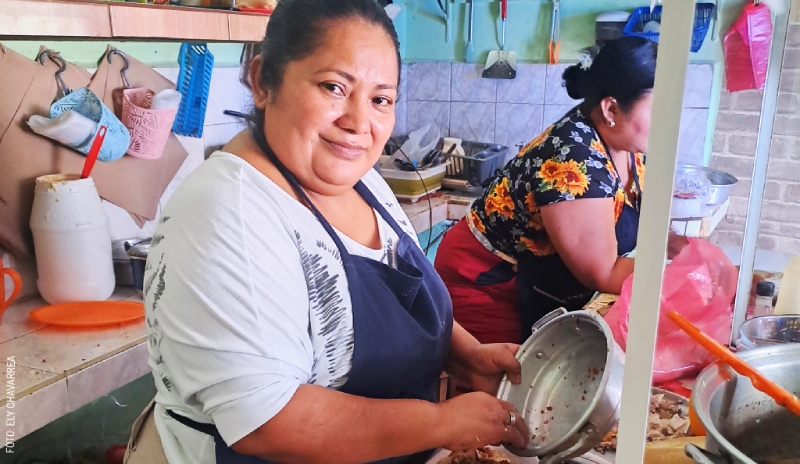
Taquería El Paradero: al servicio de su paladar desde 1968
